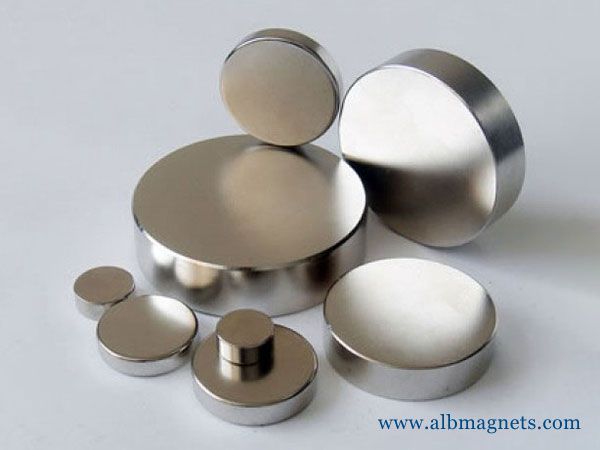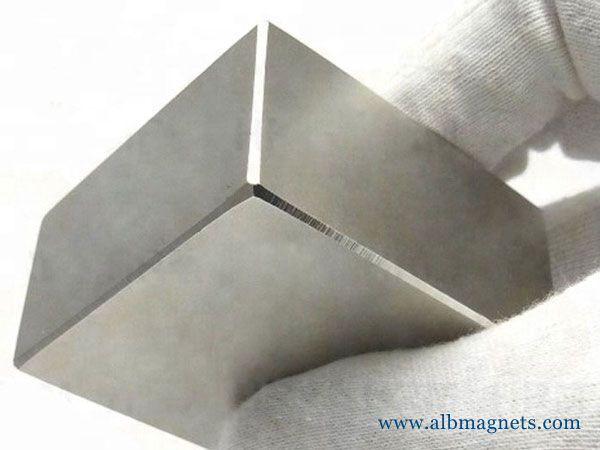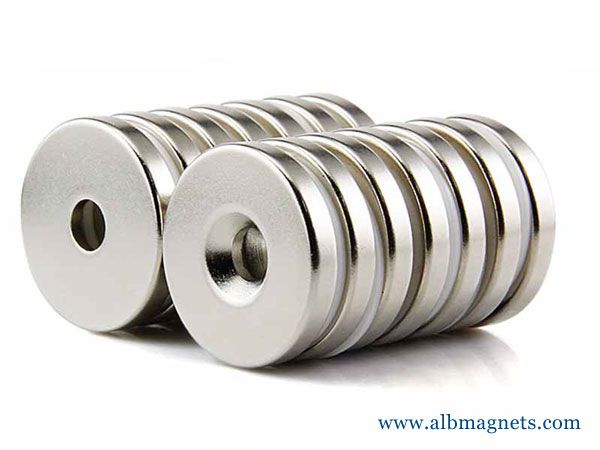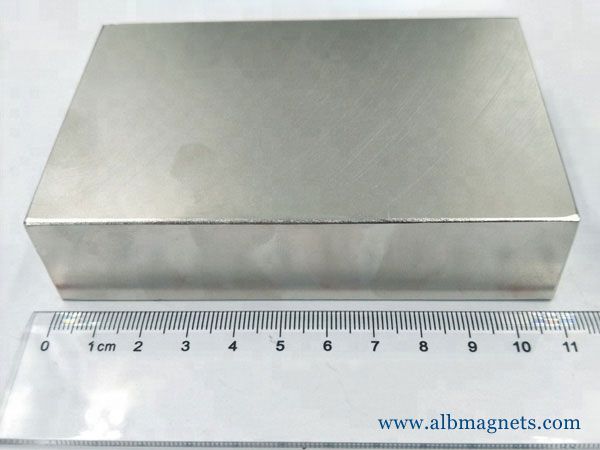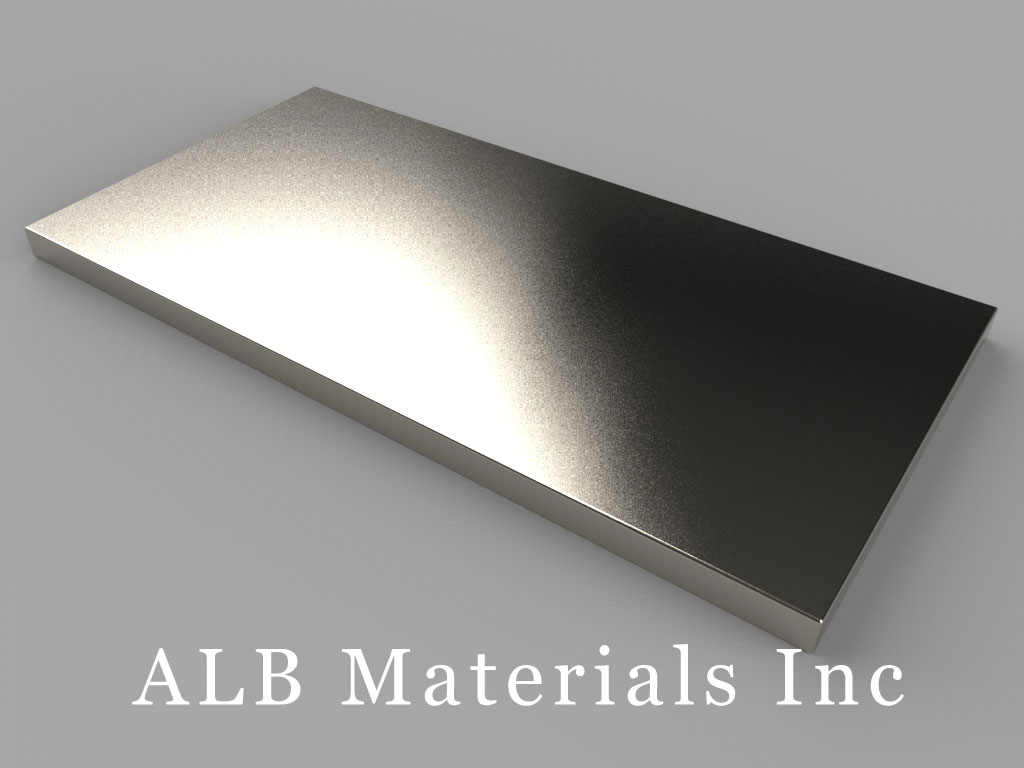401 Ryland St. Ste 200-A,
Reno, NV 89502
United States
E-mail: sales@albmaterials.com
- B-W4H1.5L7-N35 Neodymium Magnet, 7x4x1.5mm Block Magnet
- DX4Z0 Neodymium Magnets, 1 1/4 inch dia. x 3 inch thick
- D-D10H3-N38 Neodymium Magnet, 10x3mm Disc Magnet
- D-D6H2-N45-DIA Neodymium Magnet, 6x2mm Disc Magnet
- DY02 Neodymium Magnets, 2 inch dia. x 1/8 inch thick
- DY0C Neodymium Magnets, 2 inch dia. x 3/4 inch thick
- DFX8 Neodymium Magnets, 15/16 inch dia. x 1 1/2 inch thick
- D2.5x5mm Neodymium Magnet, 2.5 x 5mm Cylinder Magnet
- DX0A Neodymium Magnets, 1 inch dia. x 5/8 inch thick
- B-W1.7H4L5-N50 Neodymium Magnet, 5x1.7x4mm Block Magnet
- D-D8H3-N35 Neodymium Magnet, 8x3mm Disc Magnet
- B22C Neodymium Magnets, 1/8 inch x 1/8 inch x 3/4 inch thick
- DZX04 Neodymium Magnets, 4 inch dia. x 1/4 inch thick
- BY08Y0 Neodymium Magnets, 2 inch x 1/2 inch x 2 inch thick
- SBX0Y06-IN Neodymium Magnets, 1 inch length x 2 inch width x 3/8 inch thick, with step IN
- D41G-N52 Neodymium Magnets, 1/4 inch dia. x 1/16 inch thick
2800 Tesla Magnetic Field
2800 tesla magnetic field
How strong are magnets?
Experiments with magnets and our surroundings
Here is a list of how strong some magnetic fields can be:
The smallest value in a magnetically shielded room
10^-14 Tesla
100,000,000,000 Tesla
10^15 Gauss
What is Tesla? It is a unit of magnetic flux density. It is also equivalent to these other units:
1 Weber per square meter
10,000 Gauss (10 kilogauss)
10,000 magnetic field lines per square centimeter
65,000 magnetic field lines per square inch.
Now, 1Gauss is about 6.5 magnetic field lines per square inch.
If you place the tip of your index finger to the tip of your thumb, enclosing approximately 1 square inch, four magnetic field lines would pass through that hole due to the earth's magnetic field!
Measuring the strength of magnets
1. Hall-Effect Devices
A Hall-effect device is a piece of material that is affected by a magnetic field. Bypassing a constant amount of current through it in one direction, and by placing it in a magnetic field in another direction, we can measure a voltage across it in the third direction. This voltage is proportional to the strength of the magnetic field. This can be calibrated to provide a certain mV change for every Gauss of the magnetic field. This effect was discovered by Edwin Hall in 1917. The materials often used today in these devices are indium arsenide or gallium arsenide. There are also superconducting devices that can measure minute magnetic fields, called SQUIDS.
What can you do with a Hall-effect device? Build an electronic circuit which will amplify the voltage across the device and calibrate it so you can measure a voltage and translate that into a Gauss measurement. For such a unit, check out the page on building a Gaussmeter.
2. Paper clips and BB's
If you don't have a way to build a gaussmeter or magnetometer in order to measure the strength of the magnetic flux density of a magnet, then what else could you do? Try this.
1. Count how many paperclips or staples you can attach end to end from the north pole to the south pole.
2. Count how many paperclips or staples you can attach to one of the magnet's poles.
3. Have a big pile of paperclips or staples on the table and count how many will stick to the magnet, all over its surface.
4. Have a big pile of small (1 to 4mm in diameter, or 1/32 to 1/8" diameter) steel ball bearings or BB's in a plastic container, and count how many will stick to the magnet after you place the magnet into the middle of the pile and try to completely cover it with the BB's. Remove the magnet all covered with BB's, and take it to another plastic container to pull off and count the number of BB's that the magnet was able to attract to itself.
3. Magnetometer
This is a meter my brother had purchased in order to ensure there was no residual magnetic field left on some equipment. It would show polarity and magnitude. It was made by Anno Instruments in Indianapolis. It is very sensitive. The area at the bottom of the meter is placed near the magnetic field to be measured.
It is fairly easy to determine which rod is a magnet and which is not. I suspect that if you actually had those two rods in front of you, you would be able to figure it out. Here's a straightforward method to determine that.
Let's call one rod A and the other rod B.
(Perhaps you could keep one in the left hand and the other in the right hand).
Next, touch the end of A to the middle of B.
If it sticks, then A is the magnet and B is iron.
If it does not stick, then B is the magnet and A is iron.
To double-check this, touch the end of B to the middle of A.
If it sticks, then B is the magnet and A is iron.
If it does not stick, then A is the magnet and B is iron.
Why does this work?
In the center between the poles of a magnet, there is very little magnetic field or flux outside the magnet. All of the flux is inside the magnet itself. Because of this, iron is weakly attracted to the middle of the magnet if at all. However, the end or pole of a magnet will easily stick to any part of an iron rod.
Three rods
The solution to this is similar to the one above, but it just requires a little more work.
Let's call one rod A, one rod B, and the last rod C. Have them lined up on the floor in that sequence.
First, touch the end of A to the middle of B.
If it sticks, then A is the magnet, B is iron, and C is brass.
If it does not stick, continue.
Next, touch the end of A to the middle of C.
If it sticks, then A is the magnet, C is iron, and B is brass.
If it does not stick, continue.
Next, touch the end of B to the middle of A.
If it sticks, then B is the magnet, A is iron, and C is brass.
If it does not stick, continue.
Next, touch the end of B to the middle of C.
If it sticks, then B is the magnet, C is iron, and A is brass.
If it does not stick, continue.
Next, touch the end of C to the middle of A.
If it sticks, then C is the magnet, A is iron, and B is brass.
If it does not stick, continue.
Lastly, touch the end of C to the middle of B.
If it sticks, then C is the magnet, B is iron, and A is brass.
If it does not stick, something is wrong and you should try it all again.
Why does this work?
In the center between the poles of a magnet, there is a very little magnetic field or flux outside the magnet. All of the flux is inside the magnet itself. Because of this, iron is weakly attracted to the middle of the magnet if at all. However, the end or pole of a magnet will easily stick to any part of an iron rod. Also, brass is not attracted to a magnet, so it will never stick to a magnet.
Magnet Grades
Neodymium magnets come in different grades such as N42, N52 or N42SH. What do these numbers mean? How does the grade relate to the strength of a magnet? Does a magnet have a Gauss number?
What are Magnet Grades?
A magnet grade is a good measure of the strength of a magnet. In general, higher numbers indicate a stronger magnet.
The number comes from an actual material property, the Maximum Energy Product of the magnet material, expressed in MGOe (Mega Gauss Oersteds). It represents the strongest point on the magnet’s Demagnetization Curve or BH Curve.
The pull force from a magnet varies with the grade or N number. Double the N number and you’ll find roughly double the pull force.
How do you measure the strength of a magnet?
It depends on what is meant by strength. Two common measures of a magnet’s strength are the pull force and the strength of the magnetic field.
Pull force is how much force you have to pull on a magnet to move it away from something, such as a steel surface or another magnet. We show this force in pounds on our site, though you could also express it in Newton, or even kilograms. The specific way the magnet is tested can have a huge influence on the measured strength.
We show several different measures of strength, as described in our Pull Force FAQ answer. The number we use most is Pull Force, Case 1. It is the force required to pull a magnet directly away from a steel surface. It is a great reference for magnet strength, expressed as a single number. Even if your application doesn’t pull on the magnet in the same way, this is often a good number to use to compare the strength of different magnets.
Interestingly, the pull force between two magnets that are touching (which we call Case 3 in our online calculators) is equal to Pull Force, Case 1.
The magnetic field strength is a measurement of the magnetic field’s strength and direction at a particular point near the magnet. It is expressed in Gauss or Tesla (1 Tesla = 10,000 Gauss). It depends on the size, shape, and grade of the magnet, where the measurement is performed, and the presence of any other magnets or ferromagnetic materials nearby. Our Surface Fields article is a good place to learn more about this.
This is the important number when using magnets to activate a reed switch or Hall effect sensor.
What Grade Should I Choose?
It depends on the application. If you need the highest strength in the smallest possible package at room temperature, grade N52 is the strongest available.
Many of our magnets are offered in grade N42, which is a great balance between cost, strength, and performance at higher operating temperatures. You can get the same strength as an N52 magnet by using a slightly larger N42 magnet.
If you have slightly elevated temperatures, in the 140°F to 176°F range (60°C -80°C), N42 magnets might actually be stronger than N52. This is especially true if your magnet shape is very thin. See our detailed article on Temperature and Neodymium Magnets for more details.
For even higher temperatures, consider some of our High Temp Magnets, offered in the N42SH grade. For a complete list of available grades, see our Specs page.
How many Gauss is a magnet?
We’re often asked if a magnet “has 10,000 Gauss.” This is a bit of a strange question since Gauss is a unit of magnetism that can apply to different measurements or magnet properties. A magnet doesn't have one specific amount of Gauss in it. Two common measurements expressed in Gauss are The Residual Flux Density, Br, and the Surface Field.
Residual Flux Density, Br, is the magnetic induction remaining in a saturated magnetic material after the magnetizing field has been removed. Scroll down to the last section of this article for a more detailed explanation.
This number is a material property that is independent of the magnet shape. Grade N42 magnets have a Br of 13,200 Gauss, while N52 magnets can be as high as 14,800 Gauss. See our Specs page for more Br values for various neodymium magnet grades.
The Surface Field is the strength of the magnetic field measured right at the surface of the magnet. It’s the field strength you might measure if you could squish a magnetometer’s sensor right up against the surface. This number depends on the magnet material, the shape of the magnet and how it’s used in a magnetic circuit.
magnetic field strength
What is Magnetic Field Strength?
The strength of a magnetic field is often considered its intensity.
In the everyday world, it can be observed as the closeness of the field lines surrounding a given magnetic source.
Imagine you are looking at a magnet that has been showered with iron filings.
You will notice that the iron filings bunch up closer to one another as one moves closer to the source of the magnetism.
In the case of an ordinary magnet, the magnetic field is the strongest closest to the magnet.
The SI unit for magnetic field strength is the tesla, which is also one weber per square meter.
In terms of potential induced current, a weber is enough to power to induce a differential of one volt along with an inductor.
To get an idea of a few relative magnetic field strengths, let’s first look at the Earth’s magnetic field.
Our planet has a magnetic field strength of about 1/30,000 of a tesla.
What is amazing is that birds have evolved to navigate by having an innate understanding of this very small magnetic field.
Of course, we humans are capable of creating much larger magnetic fields in modern electronics.
The loudspeaker in your car, for example, probably generates a magnetic field between 1 to 2.4 teslas.
The largest magnetic field we have ever made occurred as a single pulse of 2,800 teslas.
There are many different situations in which magnetic fields are formed.
Current flowing down a wire is another example.
It can produce a magnetic field that runs counter-clockwise and perpendicular to the wire in concentric circles, depending on one’s perspective on the wire.
The right-hand rule is a useful way to visualize this.
Take your right hand, curl your fingers to form a fist and stick out your thumb in a direction perpendicular to your fingers.
Now, imagine that a wire is running through your curled up fingers and that the electric current runs along the direction of your thumb.
According to the right-hand rule, the B-field (also known as the magnetic field) will run along the direction of your curled up fingers with the highest strength closest to the wire.
In the above situation, one can calculate the total magnetic field strength along the wire with this equation from the Biot Savart Law:
B = (μ0/4π).
∫ ((dl ₓ ȓ)/r2)
The integral is a summation of the entire loop of wire where dl is one infinitesimal piece of that loop, μ0 is the magnetic constant (vacuum permeability 4π.10-7 H/m), r is the distance between the infinitesimal length dl and the point where the magnetic field is being calculated.
ȓ is a unit vector pointing in the direction of r.
Ampere’s law also generalizes the same integral and is useful in situations in which one wants to calculate the B field strength in highly symmetric situations such as that of an infinite solenoid or an infinite wire.
It is as follows:
∫ (B • dl) = μ0.IEnclosed
In other words, the integral spans over any arbitrary loop with I enclosed as the current enclosed within the loop.
It must be noted that the above equation assumes that the current is steady.
Part of the content in this article is reproduced from other media for the purpose of transmitting more information and does not mean that this website agrees with its views or confirms the authenticity of its content. It shall not bear direct responsibility and joint liability for the infringement of such works.
If there is any infringement, bad information, error correction, and other issues in the content of this page, please contact us at info@albmaterials.com
Link to this article: https://www.albmagnets.com/blog/2800-tesla-magnetic-field.html
How to choose and buy a strong neodymium magnet? ALBMagnets is a professional company for strong magnet design and manufacturing,
providing you with reliable N35, N38, N42, N52, N42SH and other grade super neodymium magnets and SmCo rare earth magnets.




